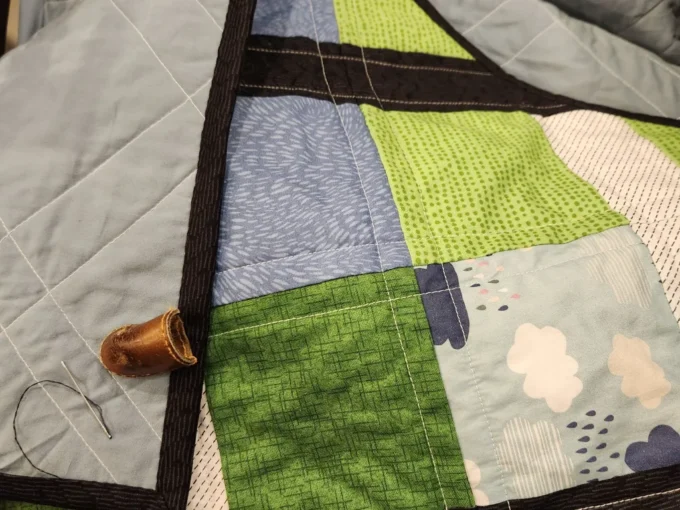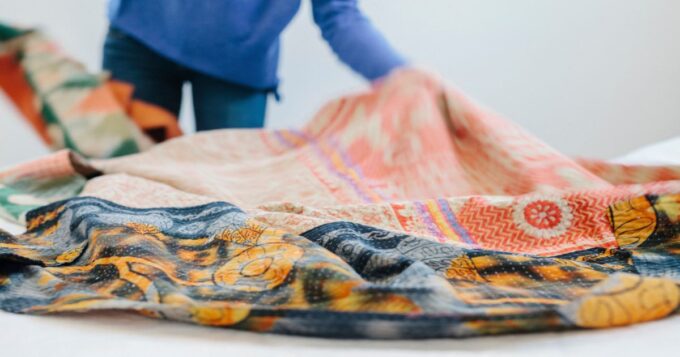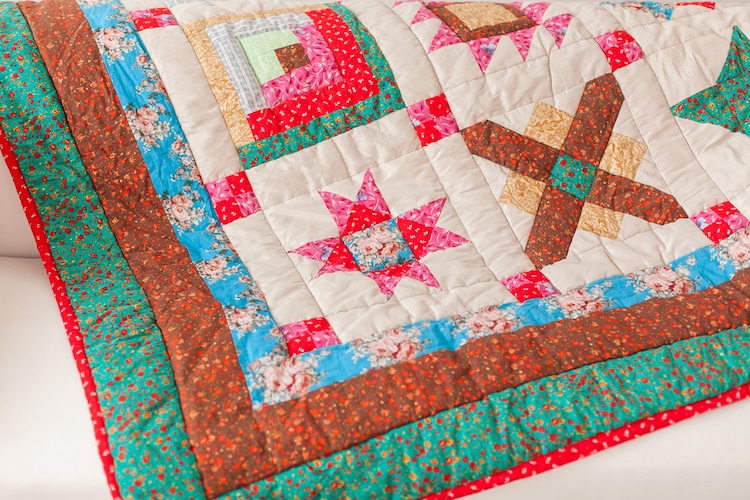Quilting is the process of making designer or non-designer quilts in a nutshell. However, the process may seem to be very basic in standard terms. It is not an extremely simple task for most people and requires an immense amount of effort to accomplish this craft. The sole act of producing quilts is not considered to be quilting only.
It has various other elements like pattern creation and choice of material, along with color combinations. You may want to know as much as you can about the basics of quilting through online quilting courses, as they are one of the most convenient ways to learn.
Importance of starting a quilting business

With the increasing demand for handmade and unique products, quilting offers a unique opportunity for entrepreneurs to tap into this growing market. In this article, we’ll explore the importance of starting a quilting business.
First of all, starting this business allows you to turn your passion into a profitable venture. Many people have a love for this craft, and starting a business allows them to turn that passion into a source of income.
This can be especially appealing for those who are looking for a flexible work schedule, as many quilting businesses can be run from the comfort of your own home.
Moreover, starting this business provides an opportunity to reach a large audience. With the rise of online marketplaces, it’s easier than ever to reach customers around the world, and sell your handmade quilts to a global audience.
Furthermore, it is a timeless craft that will never go out of style, meaning that there will always be a demand for high-quality, handmade quilts.
5 Tips For Learning Quilting
As a beginner, you need the best possible guidance that shall be able to deliver good performance. You not only need to know how to design it but also other factors that end up making a good quilt.
1. Choice Of Materials
The material with which you make the quilt is essential. The quality of the material determines its features. The material must be durable enough to last in certain everyday conditions.
Heat, water, sun, and strain on the quilt should be handled well by the material so that the quilt can last long enough. The choice of material also depends upon who you are making it for. If the user is going to be a young child or a person with sensitive skin, you must select breathable fabrics that will not cause any skin allergies.
Meanwhile, you should also select certain other fabrics like wool if the quilt is going to be used in icy weather. Depending upon the temperatures, the quilt material may vary ever so slightly.

Some fabrics are easy to work on, while others can be really hard to handle. Therefore, if you wish to have a particular style of embroidery or design on the quilt, you must not select a fabric that will cause you too much pain to design.
2. Choice Of Colors
Colors are an important choice, as the designs you make will also have to match the color of the fabric. Besides the color palette that you are going for, you also need to understand the shades, contrasts, and combinations.
Sometimes contrasts look good with specific patterns. While some patterns look better with contrasting colors, some patterns look better when blended with others. Usually, transitioning patterns look great when used with different shades of the same color palette.
Lately, pastel colors have become extremely popular when it comes to blends and soft-colored quilting. On the other hand, all-black or solid quilting may require neon contrasts. Therefore, going for different colored fabrics is beneficial in making an exemplary scheme of quilting.
Also, understand that certain shades of colors signify different meanings. White and lighter colors show simplicity, while brighter pop colors signify the desire for change and passion. Thus, choose the right color based on the occasion or person.
3. Deciding On The Textures
Sometimes, it is better not to make the patterns yourself. You may wish to go for a fabric that already has specific popular patterns. This way, you can add textures using quilting and stitching techniques. Overall, it will make the quilt look much finer. The other way round is also possible. Some fabrics have specific textures already on them.

For example, Some fabrics have textures of plaid, corduroy, and velvet on them. You can make patterns to beautify the quilt fabric and finish the product yourself. Textures on any fabric imply that the need for patterns is significantly reduced. Textured quilts are usually brilliant for solid-colored quilts.
4. Learning Patterns
There are various patterns that go well with quilts. Some of the simpler patterns include abstract and geometrical shapes. You can also play around with the patterns as you gain experience.
Usually, the patterns that stick well with quilts are the simpler but sturdier ones. Not only are the patterns simpler to make and manage, but they are also easier to redo if any of the threads go bad over time. Beginners can stick to the most basic and common patterns, which will last longer.
The prerequisite of learning about patterns is that you need to keep trying newer patterns over the years. You should also practice the ones you have already learned as well. Having the right balance between learning new patterns and practicing older ones will help you in mastering the art of quilting.
5. Finishing The Quilt
Finishing any quilt is essential whether you have patched any designs on it or not. The reason behind it is that the quilt must have a genuine quality when finished. Therefore, you must learn how to finish the quilt itself.

No artwork looks fine without the correct closing strokes. Similarly, you must also ensure that the edges of the quilt are well-rolled and stitched. A well-rolled edge in the fabric will give it a sleek and smooth completion. Besides that, cut any loose threads beyond the knot to allow a finer-looking quilt.
Conclusion
Sometimes the quilt may not turn out to be the exact way you intended it to be. This calls for reworking the entire quilt, parts of it, or scrapping it. Scrapping it is the most demotivating thing that could happen to you, but you must realize that it is a part of quilting.
You must learn how to accept failure and also how to rework certain parts of a quilt to gain a proper finish. Reworking a part of the patchwork is better than reworking the entire quilt.
Therefore, knowing how to fix minor defects in quilting will not only save you time but will also save an immense amount of money that you could lose in scrapping and restarting. Therefore, the learning process should never stop, and you should stick to regular practice and ever long learning.









